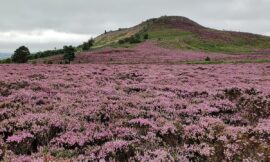Jedburgh is a picturesque town situated in the Scottish Borders, just 10 miles from the English border. With a rich history that spans over a millennium, this small yet significant town has been a witness to numerous historical events and cultural shifts. Today, Jedburgh stands as a testament to Scotland’s enduring legacy, offering a blend of historical landmarks, cultural heritage, and natural beauty.
The origins of Jedburgh date back to the 9th century when it was known as a center for religious learning and activity. The town’s most prominent historical landmark is the Jedburgh Abbey, an Augustinian abbey founded in the 12th century by King David I of Scotland. The abbey, with its striking Romanesque architecture and intricate stone carvings, remains a focal point of the town. Although it fell into ruin following the Reformation in the 16th century, the abbey still attracts visitors from around the world who come to admire its majestic ruins and tranquil setting.
Jedburgh’s strategic location made it a crucial site during the tumultuous periods of the Middle Ages. It was frequently caught in the crossfire of the Wars of Scottish Independence and later, the Anglo-Scottish Border Wars. The town’s proximity to the English border meant it was often subject to raids and skirmishes. Despite this turbulent past, Jedburgh developed into a resilient and vibrant community.
One of the town’s notable historical events is its association with Mary, Queen of Scots. In 1566, Mary visited Jedburgh, staying at what is now known as Mary, Queen of Scots’ House. The house has been preserved as a museum dedicated to her life and times, offering insights into her tumultuous reign and her connection to Jedburgh. Visitors can explore the period rooms and view various artifacts, including personal items that belonged to the queen.
Jedburgh is also home to a unique piece of Scottish heritage known as the Jedburgh Hand Ba’ game, a traditional ball game played in the streets of the town. This centuries-old event, held annually on Candlemas and Hand Ba’ days, sees teams competing to carry a ball to designated goals at opposite ends of the town. The game is a lively and chaotic affair, deeply rooted in the town’s traditions and enjoyed by locals and visitors alike.
Beyond its historical and cultural attractions, Jedburgh is surrounded by natural beauty that invites exploration. The town lies within the Teviotdale area, renowned for its rolling hills, scenic rivers, and lush countryside. Walking and hiking trails abound, offering opportunities to experience the tranquil beauty of the Scottish Borders. The nearby Jed Water, a tributary of the River Teviot, provides a picturesque backdrop for leisurely strolls and picnics.
Jedburgh’s modern-day charm is complemented by its vibrant community and local amenities. The town boasts a range of independent shops, cafes, and restaurants that reflect the local character and hospitality. Annual events and festivals, such as the Jedburgh Callants Festival, celebrate the town’s rich heritage and foster a strong sense of community spirit.
In conclusion, Jedburgh is a town steeped in history and brimming with cultural significance. From the grandeur of Jedburgh Abbey to the intimate charm of Mary, Queen of Scots’ House, the town offers a fascinating glimpse into Scotland’s past. Its strategic location, historical events, and enduring traditions have shaped Jedburgh into a unique and resilient community. Surrounded by natural beauty and imbued with a strong sense of identity, Jedburgh remains a cherished destination for those seeking to explore the rich tapestry of Scotland’s heritage.



